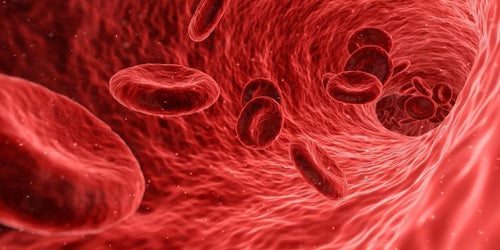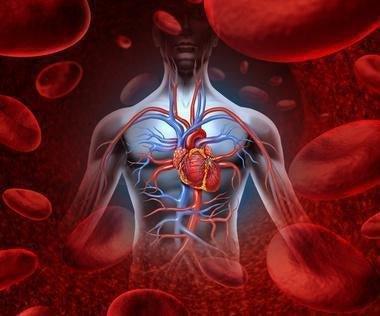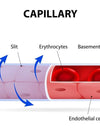The clogged pipe analogy is the old, but outdated model of explaining cardiovascular disease which still is used most of the time because of lack of understanding and lack of exposure to research (Rothberg MB, 2013).
According to this model, cholesterol plaque in the arterial walls slowly reduce the opening of the artery, first causing decreased blood flow without symptoms, then it causes angina (chest pain), and eventually it results in an infarction.
Treatments based on this theory include both coronary bypass surgery and angioplasty opening the blood vessel with a stent or a balloon.

While a massive plaque eventually can close up an artery, a heart attack is usually caused by unstable plaque thatmay not be easily detected, but can rupture and form a clot.
This is what happens according to more in depth research.
Low-density lipoprotein (LDL) mainly produced in the liver may infiltrate the vascular endothelium (the inner wall of the blood vessel), where it can initiate a complex inflammatory response. This inflammatory response can lead to arterial remodeling, in which plaque growth within the vessel walls is accommodated by outward enlargement of the vessel.
In that case, large plaques may not reduce the opening of the blood vessel and are therefore hidden from angiography.
These plaques are particularly dangerous both because they are prone to rupture, they are unstable, and because before rupture they do not limit the blood flow and therefore do not induce formation of protective collaterals.
If the blood flow slowly gets restricted as in stable plaque, the body will compensate by making new blood vessels to support the area in need, that’s why stable plaque is less dangerous.
A lot of people apparently have several plaque ruptures in their vascular system without symptoms.These ruptures can heal and is later impossible to detect.

For these reasons it’s very difficult to use available scanning methods as reliable tools to predict a deadly plaque rupture.
There is however strong evidence that addressing the extent and activity of the atherosclerotic burden and thrombosis-promoting risk factors will improve risk (Arbab-Zadeh A, et.al., 2015).
Oxidized LDL is especially damaging to the endothelium, the inner lining of the blood vessels (Gradinaru D, et al., 2015).
Oxidized LDL cholesterol is associated with early atherosclerosis (Calmarza P, et.al., 2014).
When does atherosclerosis start?
It start at a very young age.
Atherosclerosis varied from 17% in individuals less than 20 years old to 85% in people 50 years old or older (Tuzcu EM, et.al., 2001).
If you have children, this is something to keep in mind. It is very important to have a healthy diet even for a child.
References
Arbab-Zadeh A, Fuster V.The myth of the "vulnerable plaque": transitioning from a focus on individual lesions to atherosclerotic disease burden for coronary artery disease risk assessment.J Am Coll Cardiol. 2015 Mar 3;65(8):846-855.
Calmarza P1, Trejo JM, Lapresta C, López P,LDL oxidation and its association with carotid artery intima-media thickness and other cardiovascular risk factors in a sample of Spanish general population.Angiology. 2014 Apr;65(4):357-62.
Gradinaru D, Borsa C, Ionescu C, Prada GI,Oxidized LDL and NO synthesis--Biomarkers of endothelial dysfunction and ageing.Mech Ageing Dev. 2015 Nov;151:101-13.
Rothberg MB,Coronary artery disease as clogged pipes: a misconceptual model.Circ Cardiovasc Qual Outcomes. 2013 Jan 1;6(1):129-32.
Tuzcu EM1, Kapadia SR, Tutar E, Ziada KM, Hobbs RE, McCarthy PM, Young JB, Nissen SE.High prevalence of coronary atherosclerosis in asymptomatic teenagers and young adults: evidence from intravascular ultrasound.Circulation.2001 Jun 5;103(22):2705-10.

Learn to Eat Program
Based on the most effective scientific strategies, this program was created to help you reduce inflammation and feel great.







